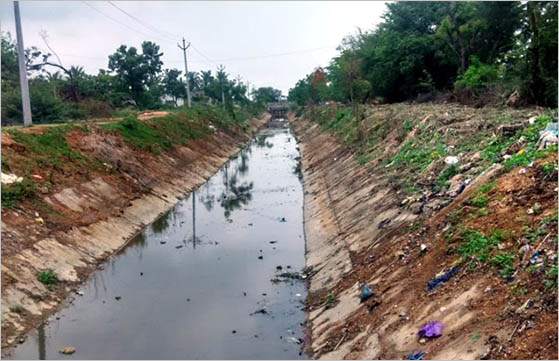Leading Industrial Wastewater Treatment Solutions: Making Certain Compliance and Efficiency
Leading Industrial Wastewater Treatment Solutions: Making Certain Compliance and Efficiency
Blog Article
Exactly How Fluid Garbage Disposal Works: A Comprehensive Introduction of Techniques and Technologies Used

Summary of Liquid Waste Types
The intricacy of fluid waste types demands a thorough understanding of their characteristics and implications for disposal. Fluid waste can extensively be classified right into numerous kinds, including industrial, local, farming, and dangerous waste. Each group displays distinctive homes, requiring specific management strategies to reduce ecological and health dangers.
Industrial fluid waste stems from producing procedures and usually includes a series of impurities, such as heavy steels, solvents, and natural compounds. Metropolitan liquid waste, mainly consisting of wastewater from homes and industrial establishments, contains natural matter, nutrients, and pathogens (industrial wastewater treatment). Agricultural fluid waste, consisting of drainage from ranches, might consist of plant foods, pesticides, and pet waste, posing risks to water top quality and environments
Hazardous fluid waste is characterized by its toxicity, reactivity, or prospective to create damage. Understanding these varied liquid waste kinds is essential for developing reliable disposal approaches and ensuring compliance with ecological laws.
Physical Therapy Techniques

Screening is the preliminary action, where bigger fragments and particles are gotten rid of from the fluid waste using displays or grates. In sedimentation tanks, larger particles clear up at the bottom, forming a sludge layer, while the made clear liquid can be additional dealt with.
Filtering is an additional essential technique that involves passing the liquid with permeable materials, such as sand or membranes, to record smaller fragments. This action improves the top quality of the fluid, making it ideal for succeeding therapy procedures.

Chemical Therapy Strategies
Chemical therapy methods are crucial for efficiently taking care of liquid waste, particularly in resolving liquified and colloidal contaminants that physical approaches may not adequately eliminate. These methods make use of numerous chemical representatives to reduce the effects of, speed up, or change harmful materials right into less dangerous kinds.
One common technique is coagulation and flocculation, where chemicals such as alum or ferric chloride are contributed to promote the aggregation of put on hold particles. This process boosts sedimentation, enabling easier removal of the resulting sludge. In addition, oxidation processes, using representatives like chlorine or ozone, are employed to break down complex organic substances and virus, rendering the waste more secure for discharge or further therapy.
Neutralization is an additional critical strategy, which changes the pH of acidic or alkaline waste streams to neutral levels, avoiding prospective injury to downstream systems and the atmosphere. Moreover, progressed oxidation processes (AOPs) make use of combinations of oxidants and ultraviolet light to degrade persistent contaminants, attaining a higher level of treatment effectiveness.
Biological Treatment Procedures
Organic treatment processes play a crucial duty in the monitoring of fluid waste by utilizing microorganisms to disintegrate raw material and reduce contaminant degrees. These processes can be extensively classified right into anaerobic and aerobic therapies, each using certain microbial communities to attain effective waste destruction.
Cardio therapy involves making use of oxygen to facilitate the breakdown of natural products by germs. This process is commonly implemented in activated sludge systems, where aeration containers give a favorable setting for microbial growth, bring about the oxidation of natural pollutants. The resultant biomass can be divided from dealt with effluent via sedimentation.
On the other hand, anaerobic treatment occurs in the absence of oxygen, depending on different germs to damage down raw material. This technique is especially useful for high-strength waste, as it produces biogas, a sustainable power source, while decreasing sludge manufacturing. Technologies such as anaerobic digesters are frequently used in municipal and commercial applications.
Both anaerobic and aerobic biological therapies my review here not only reduce the environmental influence of fluid waste however also facilitate resource recovery, making them necessary parts of sustainable waste management approaches. Their versatility, effectiveness, and effectiveness sustain their widespread implementation throughout numerous fields.
Emerging Technologies in Disposal
Innovative techniques to liquid garbage disposal are rapidly developing, driven by developments in innovation and an increasing focus on sustainability. Among these arising modern technologies, membrane bioreactors (MBRs) have obtained grip for their capability to combine organic therapy with membrane layer filtering, leading to high-quality effluent that can be recycled in numerous applications. MBRs allow smaller sized impacts and a lot more efficient operations contrasted to traditional systems.
Another promising advancement is using anaerobic digestion integrated with nutrient recovery modern technologies, which not only treats liquid waste however additionally produces biogas and recuperates useful nutrients like nitrogen and phosphorus. This dual advantage improves source performance and minimizes ecological impact.
Additionally, advanced oxidation processes (AOPs) are being embraced for the degradation of intricate natural pollutants. These approaches make use of powerful oxidants and catalysts to break down pollutants at the molecular level, providing a very efficient solution for challenging waste streams.
Furthermore, the integration of expert system and equipment knowing in waste monitoring systems is maximizing functional performance and predictive maintenance, causing reduced expenses and boosted ecological compliance. These innovations show a significant change towards more lasting and efficient fluid garbage disposal methods.
Verdict
In final thought, reliable fluid waste disposal requires a comprehensive understanding of various strategies and technologies. By continuously advancing find more info these techniques, it becomes possible to attend to the growing challenges linked with fluid waste, inevitably adding to ecological security and source healing.
Fluid waste Full Article disposal is a crucial facet of ecological monitoring, needing a detailed understanding of different techniques and innovations tailored to various waste kinds. Liquid waste can extensively be categorized into several kinds, consisting of commercial, local, agricultural, and unsafe waste. Agricultural liquid waste, consisting of overflow from farms, might include fertilizers, pesticides, and pet waste, presenting risks to water quality and communities.
Numerous physical therapy methods play an essential duty in handling liquid waste properly - industrial wastewater treatment.In verdict, reliable fluid waste disposal requires a comprehensive understanding of various strategies and technologies
Report this page